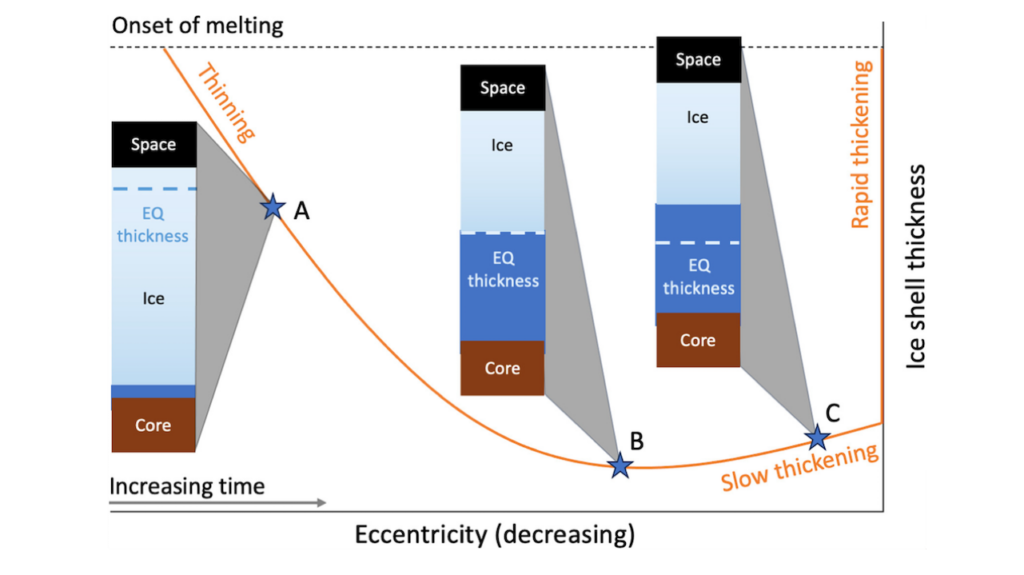The Cloudbow Of Planet Earth Observed In Polarisation

Scattering processes in the atmospheres of planets cause characteristic features that can be particularly well observed in polarisation. For planet Earth, both molecular and scattering by small particles imprint specific signatures in its phase curve.
An unequivocal prediction of a liquid-water-loaded atmosphere is the existence of a rainbow feature at a scattering angle of around 138-144deg. Earthshine allows us to observe the primary rainbow in linear polarisation. We observed polarisation spectra of Earthshine using FORS2 at the Very Large Telescope for phase angles from 33deg to 65deg (Sun–Earth–Moon angle). The spectra were used to derive the degree of polarisation in the B, V, R, and I passbands and the phase curve from 33deg to 136deg . The new observations extend to the smallest phases that can be observed from the ground. The degree of polarisation of planet Earth is increasing for decreasing phase angles downwards of 45deg.
From comparison of the phase curve observed with models of an Earth-type atmosphere we are able to determine the refractive index of water and to constrain the mean water droplet sizes to 6-7 mum. Furthermore, we can retrieve the mean cloud fraction of liquid water clouds to 0.3, and the mean optical depth of the water clouds to values between 10 and 20. Our observations allow us to discern two fundamentally different scattering mechanisms of the atmosphere of planet Earth: molecular and particle scattering.
The physical and chemical properties can be retrieved with high fidelity through suitable inversion of the phase curve. Observations of polarimetric phase curves of planets beyond the Solar System shall be extremely valuable for a thorough characterisation of their atmospheres.
Michael F. Sterzik, Stefano Bagnulo, Claudia Emde, Mihail Manev
Comments: 13 pages, 7 figures
Subjects: Earth and Planetary Astrophysics (astro-ph.EP); Instrumentation and Methods for Astrophysics (astro-ph.IM)
DOI: 10.1051/0004-6361/202038270
Cite as: arXiv:2006.05198 [astro-ph.EP] (or arXiv:2006.05198v1 [astro-ph.EP] for this version)
Submission history
From: Michael F. Sterzik
[v1] Tue, 9 Jun 2020 11:48:12 UTC (943 KB)
https://arxiv.org/abs/2006.05198
Astrobiology








